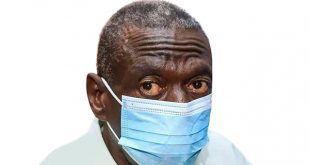
By Flavia Nassaka
Health sector experts say they pose new challenges
The new World Health Organisation (WHO) guidelines, including requiring that Antiretroviral (ARV) drugs are provided immediately a patient is diagnosedto be HIV positive, could be difficult to implement, according to health sector experts.
Previous WHO guidelines required doctors to monitor patients’ CD4 cell counts and initiate ART when the immune system starts showing signs of being overwhelmed.
In a statement on Sept.30, WHO said initiating a patient on treatment early keeps them healthier and reduces the risk of transmitting the virus to other people. The WHO and the UNAIDS estimate that implementing the new guidelines could avert 21 million HIV deaths and prevent 28 million new infections by 2030. The new guidelines also require HIV negative people at risk of infection to be given ARVs for prevention (Pre-exposure Prophylaxis – PreP). Dr. Nulu Bulya, a HIV researcher with the Infectious Diseases Institute says these guidelines may provide an opportunity for the ministry to approve the use of PreP by most at risk populations such as men who have sex with men and discordant couples. She says with PreP, about 60% of new infections will be avoided. Joshua Wamboga, the Executive Director of the Uganda Network of AIDS Services Organisations (UNASO) says since early enrollment is said to reduce infection by 96%, “it gives hope that we are close to getting a vaccine”.
But Kenneth Mwehonge of the Coalition for Health Promotion and Social Development (HEPs-Uganda) says while fulfilling the guidelines would require a substantial cash injection, the money may go to waste unless the current strategies are not overhauled. He said there is need for behavioral change to ensure that Ugandans shift away from taking HIV drugs when they are sick and opportunistic infections have set in. “We need a strong health delivery system with counselors and medical workers to ensure people start taking the medicine immediately”.
Implementation of the new guidelines could also be a challenge partly because of the large numbers of people needing treatment. Globally, according WHO 2014 figures, up to 37 million people are in need of drugs but only 15 million are currently being treated. The biggest percentage of those lacking treatment is from low developed countries, such as Uganda, where drugs are inaccessible. As in most of African countries, the limited drugs available in Uganda are not enough even for those whose immune system has been weakened.As of September, some health centers across the country were reporting drug stock outs.
Health facilities, especially those run by Uganda Cares, have been reporting stock outs of the HIV drug – Tenofovir and test kits, according toMwehonge. He says the new guidelines are important but Uganda might not implement them. He said although WHO earlier revised the guidelines for people to start taking drugs at CD4 cell count of 500 from 350, the government did not act.
Cost of treatment
The government has been working on enrolling everyone who needs treatment on ARVs and has come up with programmes such as prevention of mother to child HIV transmission, voluntary male circumcision and others. But of about 1.4 million Ugandans living with the virus, only 750, 896 had access to treatment by March this year. The slow pace has been blamed on lack of money. The inadequate government funding has prompted development partners to intervene under the US President’s Emergency Plan for AIDS Relief (PEPFAR) which has mainly contributed in improving access to treatment and prevention of mother-to-child transmission (PMTCT). Only a small component has been spent on treatment. According to Jackie Calnan who is the USAID program management specialist for HIV in Uganda, US$387 million was spent on HIV related issues under PEPFAR program from October 2014 to September 2015. Of this, only US$ 30 million was spent on treatment. Calnan was at the beginning of October speaking at a press briefing at the US Embassy in Kampala. Uganda in June got a Global Fund grant of US$421 million to fight Malaria, Tuberculosis (TB) and HIV. Of this, only US$176 million was set aside for HIV and catered for both treatment and prevention. In spite the financial set-backs, the government has been pushing to ensure that more people access Antiretroviral (ARV) therapy. At the HIV Review Meeting held in Kampala recently, the Uganda AIDS Commission (UAC) Director General, Dr. Christine Ondoa announced that the commission had allocated Shs13 billion for it. With that funding, Wamboga says, enrolling everyone on treatment is possible if the money is well planned for. “We need to customise the guidelines at country level. This we can do by stepping up the allocation of finance to the ministry of Health targeting test and treat programmes,” he says. He says spending on HIV/AIDS needs to be assessed to find out how much money is spent on treatment and HIV prevention programmes. “You may find this money just remains on paper and doesn’t go to the intended areas,” he says.
 The Independent Uganda: You get the Truth we Pay the Price
The Independent Uganda: You get the Truth we Pay the Price


